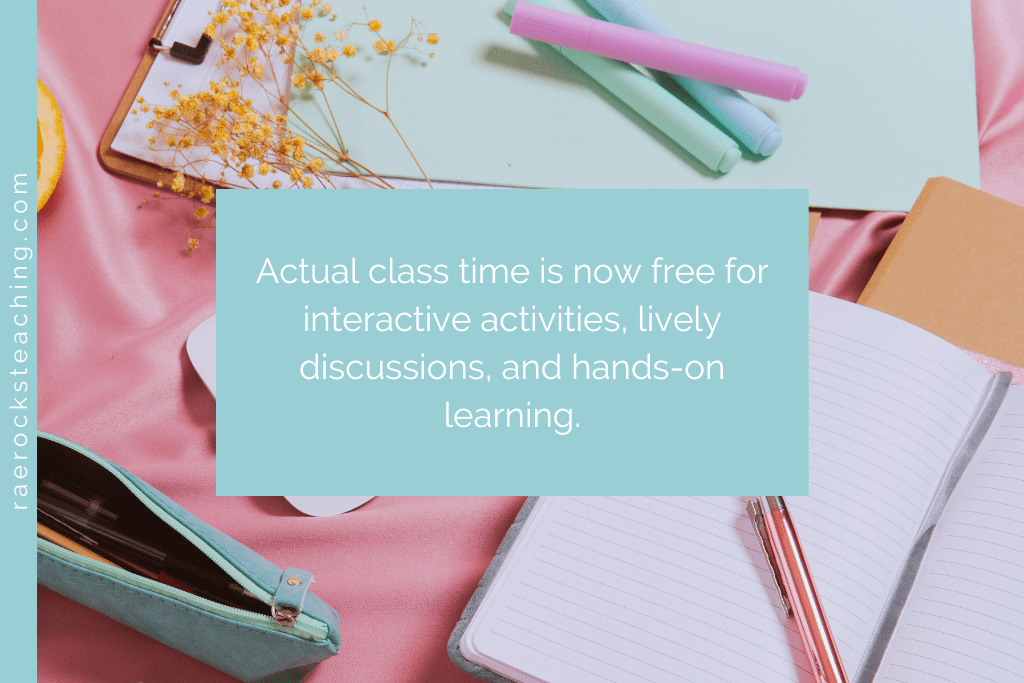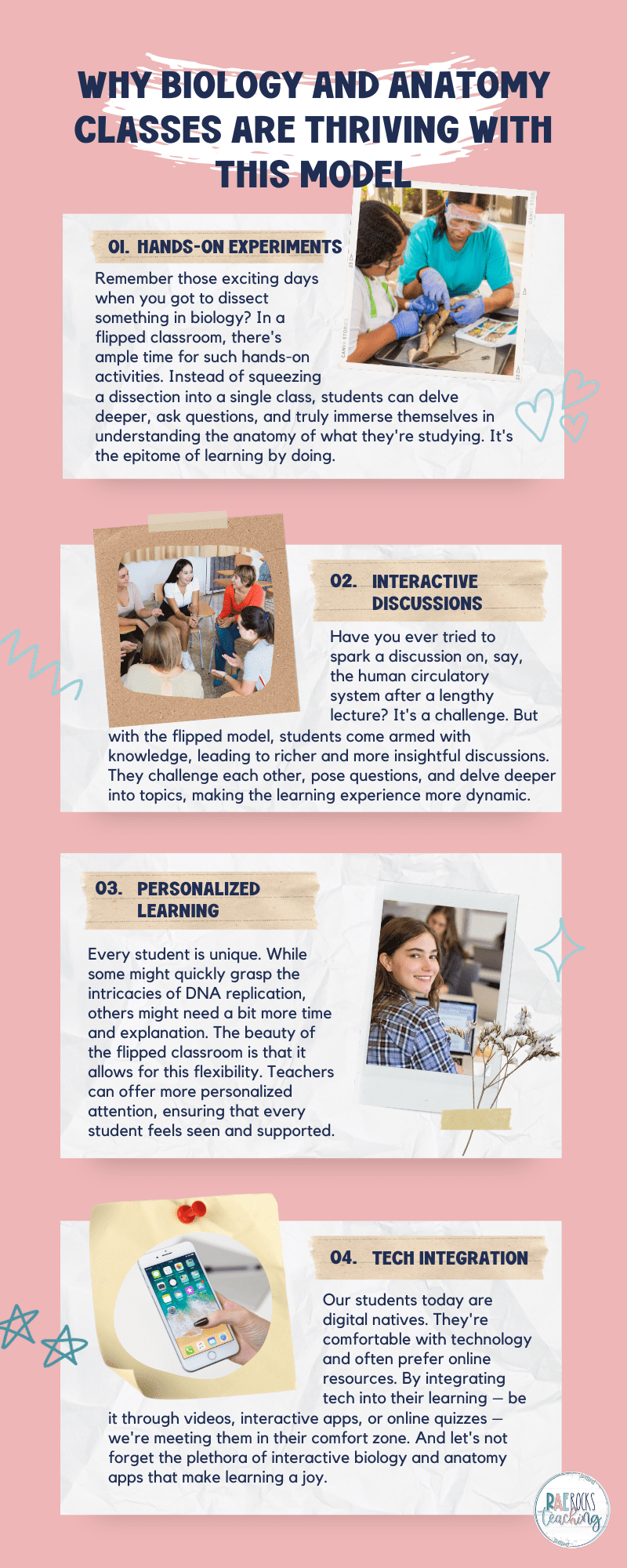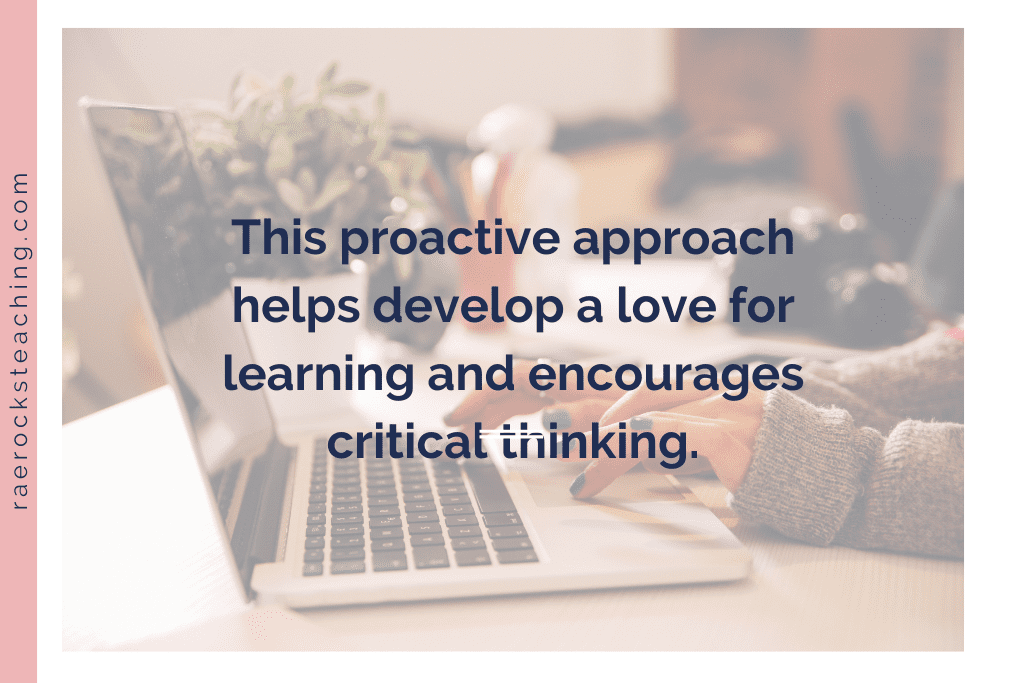Have you ever heard of the flipped teaching approach? If not, you’re in for a treat. This innovative teaching method is revolutionizing the way our high school students experience biology and anatomy. And the best part? It’s skyrocketing their engagement levels!
Looking for more ways to engage your lessons in class?
First Things First: What’s the Flipped Teaching Approach?
In the traditional classroom setup, the drill is familiar: teachers lecture during class time, and students tackle their homework at home. The flipped classroom, however, flips (yes, you guessed it!) this model around. Instead of lectures, students watch videos or read materials at home. This shift means that the actual class time is now free for interactive activities, lively discussions, and hands-on learning.

-
Save
Why Biology and Anatomy Classes Are Thriving with This Model
ONE | Hands-On Experiments: Remember those exciting days when you got to dissect something in biology? In a flipped classroom, there’s ample time for such hands-on activities. Instead of squeezing a dissection into a single class, students can delve deeper, ask questions, and truly immerse themselves in understanding the anatomy of what they’re studying. It’s the epitome of learning by doing.
TWO | Interactive Discussions: Have you ever tried to spark a discussion on, say, the human circulatory system after a lengthy lecture? It’s a challenge. But with the flipped model, students come armed with knowledge, leading to richer and more insightful discussions. They challenge each other, pose questions, and delve deeper into topics, making the learning experience more dynamic.
THREE | Personalized Learning: Every student is unique. While some might quickly grasp the intricacies of DNA replication, others might need a bit more time and explanation. The beauty of the flipped classroom is that it allows for this flexibility. Teachers can offer more personalized attention, ensuring that every student feels seen and supported.
FOUR | Tech Integration: Our students today are digital natives. They’re comfortable with technology and often prefer online resources. By integrating tech into their learning – be it through videos, interactive apps, or online quizzes – we’re meeting them in their comfort zone. And let’s not forget the plethora of interactive biology and anatomy apps that make learning a joy.

-
Save
Flipped Classroom Method of Instruction Success Stories
Teacher 1’s DNA Replication Game: After watching a video on DNA replication at home, Teacher 1’s students played an interactive game in class. They “acted out” the replication process, with each student representing a different cellular component. This kinesthetic approach not only made the lesson fun but also reinforced their understanding in a memorable way.
Teacher 2’s Virtual Reality Anatomy Adventure: Post their at-home reading about the human heart, Teacher 2 introduced students to a whole new world – literally. Using VR headsets, the class took a “tour” inside a beating heart. This immersive experience made the anatomy of the heart more tangible and fascinating.
Teacher 3’s Plant Growth Experiment: Moving beyond traditional textbook learning, Teacher 3’s students embarked on a month-long experiment. They grew plants under various conditions, documenting their observations and drawing conclusions about photosynthesis. This hands-on approach transformed a theoretical concept into a tangible, real-world experiment.
The Bigger Picture of a Flipped Classroom Approach
The flipped classroom is more than just a shift in when and where learning happens. It’s about empowering students to take charge of their education. When they come to class prepared, having already engaged with the material, they’re ready to dive deeper, ask questions, and collaborate with peers. This proactive approach helps develop a love for learning and encourages critical thinking.
Moreover, this model allows educators to truly connect with their students. With the bulk of the “teaching” done at home, class time becomes an opportunity for teachers to mentor, guide, and inspire. It’s a win-win for everyone involved.

-
Save
The flipped classroom is not just another educational trend that will fade away. It’s a robust, effective, and engaging tool that’s breathing new life into subjects like biology and anatomy. By focusing on active participation rather than passive listening, we’re not only enhancing the educational experience but also setting our students up for long-term success.
So, to all the teacher out there, consider giving the flipped classroom a shot in your next biology or anatomy lesson. The results might just surprise you!
Don’t forget to Sign up for the FREE TRAINING on Flipping Learning IN-Class With Stations!

-
Save
I love sharing helpful content with y’all and would love to connect on IG or Facebook. I’m on TikTok too! Follow me and send me a DM with what you need more of because I’m here to help! If you are looking for even more inspiration, find me on Pinterest!
Wanna read more?
Incorporating more creative and playful technology in the flipped classroom?
My Top 7 Student-Centered Learning Approaches You Need to Try
5 Strong Reasons I Use the Flipping the Classroom Model for High School Anatomy Classes
Share via:








